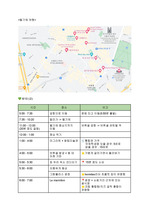소개글
세계적인 자기결정 이론과 모델에 관한 내용에 관한논문입니다.
목차
ㅣ. 서론Ⅱ. 자기결정 이론
Ⅲ. 자기결정 모델
Ⅳ. 결론 및 논의
본문내용
1. 연구의 필요성지난 10년 간 자기결정에 대한 많은 관심과 실제적 지원으로 인하여, 자기결정에 관한 연구 논문은 여러 분야에서 이루어졌으며, 긍정적인 연구의 성과를 거두게 되었다. 자기결정에 대한 연구는 이론적 구조와 모델 구축, 개념 정의, 요소 정의, 교육과정의 개발과 그 훈련 효과, 자기결정 하위요소의 연구 등으로 나뉘어져 연구되고 있다.
이와 같은 연구들은 특수교육 교육과정을 변화시키고자 노력하고 있으며, 미국에서는 이 노력의 결과로 세가지 합의점에 도달했다. 첫째는 자기결정은 전환 과정의 중요한 성과이며(Halloran, 1993; Wehman, 1993), 이에 대한 조기 교육이 이루어져야 하고, 전 생애를 통한 계속적인 발전과정이 되어야 한다(Ward, 1992). 둘째, 장애인은 모든 국민과 똑같은 자기결정 권리를 가진다. 셋째, 장애인 서비스의 영역에 있어서 다양한 원리 전반을 연구하는 전문가들은 장애인들에게 선택의 경험과 자기결정 훈련의 기회를 제공하는 것이 필요하다(Wehmeyer, Kelchner, & Richards, 1995).
자기결정에 대한 관심의 증가는 자기결정을 향상시키기 위한 정책 수단과 중재 발전을 위한 노력으로 이어졌다. 이 노력의 가장 주목할 만한 것은 1990년 미국의 IDEA 통과로서, 이 시기부터 자기결정 발전의 2국면으로 보고 있으며, 이 시기는 자기결정과 관련된 정부법안과 정부의 발의가 이루어진 시기이다.
1990년 IDEA는 성공적인 성인으로의 전환을 위한 프로그램을 학교에 제안했다(Martin, Marshall, & Maxson, 1993). IDEA는 가능한 14세와 16세 사이부터 모든 학생의 IEP에 전환 교육을 시작할 것을 요구했으며, 이 법은 또한 학생의 기호와 흥미에 바탕을 둔 교육 계획과 학생 본인의 전환 계획 회의의 실제적 참여를 요구했다(Martin, Marshall, & Maxson, 1993; Wehmeyer, & Ward, 1995). IDEA의 통과 이후 장애인의 자기결정 훈련에 필요한 교육과 서비스에 관심이 증가하게 되었다(American Association on Mental Retardation. 1993).
참고 자료
김정권, 김혜경. (2000a). 자기결정과 발달지체인의 삶의 질 및 사회완전통합과의 관계. 특수교육학연구. 34(3).김정권, 김혜경. (2000b). 한국 발달지체인의 자기권리주장 운동-“더불어사는 국민”의 의의와 과제. 발달장애학회. 4.
김정권, 김혜경. (2000c). 발달지체인의 자기결정 : 교육적 접근과 가족 참여. 특수교육연구. 7.
김혜경. (2000). 발달지체인의 자기권리주장 운동에 대한 인간주의적 담론. 정신지체연구. 2.
Abery, B. (1994). A conceptual framework for enhancing self-determination. In M. Hayden & B. Abery (Eds.). Challenges for a service system in transition : Ensuring quality community experience for person with developmental disabilities(pp. 345-380). Baltimore, Md.: Paul H. Brookes.
Abery, B. H., McGrew, K., & Smith, J. (1995). The contribution of individual characteristics and environment factors to the self-determination of children and youth with disabilities. Manyscript in preparation.
Bandura, A. (1977a). Social Learning Theory. Englewood Cliffs, NJ: Prentice Hall.
Bandura, A. (1977b). Self-efficacy: Toward a unifying theory fo behavioral change. Psychological Review, 84(2), 191-212.
Deci, E. L., Connell, J., & Ryan, R. (1989). Self-determination in a work organization. Journal of Applied Psychology, 74, 580-590.
Deci, E. L., & Ryan, R. M. (1985). Intrinsic motivation and self-determination in human behavior. New York: Plenum.
Deci, E. L., & Ryan, R. M. (1994). Promoting Self-determined Education. Scandinavian Journal of Educational Research, 38(1), 3-14.
Field, S., & Hoffman, A. (1994). Development of a model for self-determination. Career Development for Exceptional Individuals. 17, 159-169.
Halloran, W. D. (1993). Transition services requirement: Issues, implications, challenge. In R. C. Eaves & P. J. McLaughlin(Eds), Recent advances in special education and rehabilitation(pp. 210-224). Boston: Andover Medical Publishers.
Kohn, A. (1993). Choice for children: Why and how to let student decide. Phi Delta Kappan, 75(1), 8-20.
Martin, J. E., Marshall, L. H., & Maxson, L. (1993). Transition policy: Infusing self-determination and self-advocacy into transition programs. Career Development for Exceptional Individuals, 16(1), 53-61.
Mithaug, D. E. (1996). Equal opportunity theory. Thousand Oaks, CA:Sage Publications, Inc.
Mithaug, D. E., Campeau, P., & Wolman, J. (1992). In J. Patton & G. Blalock(Eds.). Transition and Students with Learning Disabilities(pp. 69-70). Austin, Tx: pro-ed, Inc.
Patton, J., & Blalock, G. (Eds.). (1996). Transition and students with learning disabilities: Facilitating the movement from school to adult life. Austin, TX: pro-ed. Inc.
Powers, L. E., Sowers, J., Turner, A., Nesbitt, M., Khowles, E., & Ellison, R. (1996). Take charge: A model for promoting self-determination among adolescents with challenges, In L. E. Powers, G. H. S. Singer, & J. Sowers, On the road to autonomy: Promoting self-competence in children and youth with disabilities. Baltimore: Brookes.
Rappaport, J. (1981). In praise of a paradox: A social policy of empowerment over prevention. American Journal of Community Psychology, 9, 1-25.
Sands, D. J. & Doll, B. (1996). Fostering self-determination is a developmental task. The Journal of Special Education, 30, 58-76
Sands, D. J., & Wehmeyer, M. L. (1996). Self-determination across the life span, Baltimore: Paul H. Brookes Publishing Co.
Schunk, D. H. (1989). Social cognitive theory and self-regulated learning. In B. J. Zimmerman & D. H. Schunk(Eds.), Self-regulated learning and academic achievement: Theory, research and practice. New York: Springer-Verlag.
Schwarzer, R. (Eds.). (1992). Self-efficacy: Thought control of action, Washington, DC: Hemisphere Publishing Corporation.
Serna, L. A., & Lau-Smith, J. (1995). Learning with purpose: Self-determination skills for students who are at risk for school and community failure. Intervention in School and Clinic, 30, 142-146.
Ward, M. J. (1992). Introduction to secondary special education and transiton issues. In F. R. Rusch, L. DeStefano, J. Chadsey-Rusch, L. A. Phelps, & E. Szymanski(Eds.), Transition from school to adult life: Models, linkages and policy(pp. 387-389). Sycamore, IL: Sycamore.
Ward, M. J. (1995). OSERS effort to facilitate self-determination. Intervention in School and Clinic, 30, 132.
Ward, M. J., & Kohler, P. (1996). Promoting self-determination for individuals with disabilities : Content and process. In L. E. Powers, G. H. Slinger, & J. Sowers(Eds.), Making our wav: Building self-competence among children and youth with disabilities (pp. 275-290). Baltimore: Brookes.
Wehman, P. (1993). Transiton from school to adulthood for young people with disabilities: Critical issues and policies. In R. C. Evans & P. J. McLaughlin(Eds.), Recent advances in special education and rehabilitation(pp. 178-192). Boston: Andover Medical Publishers.
Wehmeyer, M. L. (1992a). Self-determination and the education of students with mental retardation. Education and Training in Mental Retardation and Developmental Disabilities. 21, 302-314.
Wehmeyer, M. L. (1992b). Self-determination: Critical skills for outcome-oriented transition services. Journal of Vocational Special Needs Education, 15(1), 3-7.
Wehmeyer, M. L. (1995). The Arc`s self-determination scale: Procedural guidelines. Arling, TX: The Arc.
Wehmeyer, M. L. (1996a). Self-determination for youth wit significant disabilities: From theory to practice. In L. E. Power, G. H. Singer, & J. Sowers(Eds.). On the road to autonomy: Promoting self-competence in children and youth with disabilities (pp. 115-134). Baltimore, MD: Paul H. Brookes.
Wehmeyer, M. L. (1997). Self-determination as an educational outcome:A definitional framework and implications for intervention. Journal of Developmental and Physical Disabilities, 9(3), 175-209.
Wehmeyer, M. L., Kelchner, K. & Richards, S. (1995). Individual and environmental factors related to self-determination of adults with mental retardation. Journal of Vocational Rehabilitation, 5, 291-305.
Wehmeyer, M., & Ward, M. J. (1995). The spirit of IDEA mandate : Student involvement in transition planning. Journal of the Association for Vocational Special Needs Education, 17, 108-111.
Whitman, T. L. (1990). Self-regulation and mental retardation. American Journal on Mental Retardation, 94, 347-362.
이 자료와 함께 구매한 자료
 [교육심리]대학원 교육심리학 중 학습동기에 해당하는 내용입니다. 20페이지
[교육심리]대학원 교육심리학 중 학습동기에 해당하는 내용입니다. 20페이지 자기결정 기술 13페이지
자기결정 기술 13페이지 Why We Do What We Do 논문해석 18페이지
Why We Do What We Do 논문해석 18페이지 직장에서의 성공적인 인간관계 13페이지
직장에서의 성공적인 인간관계 13페이지 자기 결정 이론 요약 2페이지
자기 결정 이론 요약 2페이지



















![[특수교육]자기결정이론과 모델 비판](/doc/cover/4104400/%ED%8A%B9%EC%88%98%EA%B5%90%EC%9C%A1_%EC%9E%90%EA%B8%B0%EA%B2%B0%EC%A0%95%EC%9D%B4%EB%A1%A0%EA%B3%BC_%EB%AA%A8%EB%8D%B8_%EB%B9%84%ED%8C%90.jpg)


